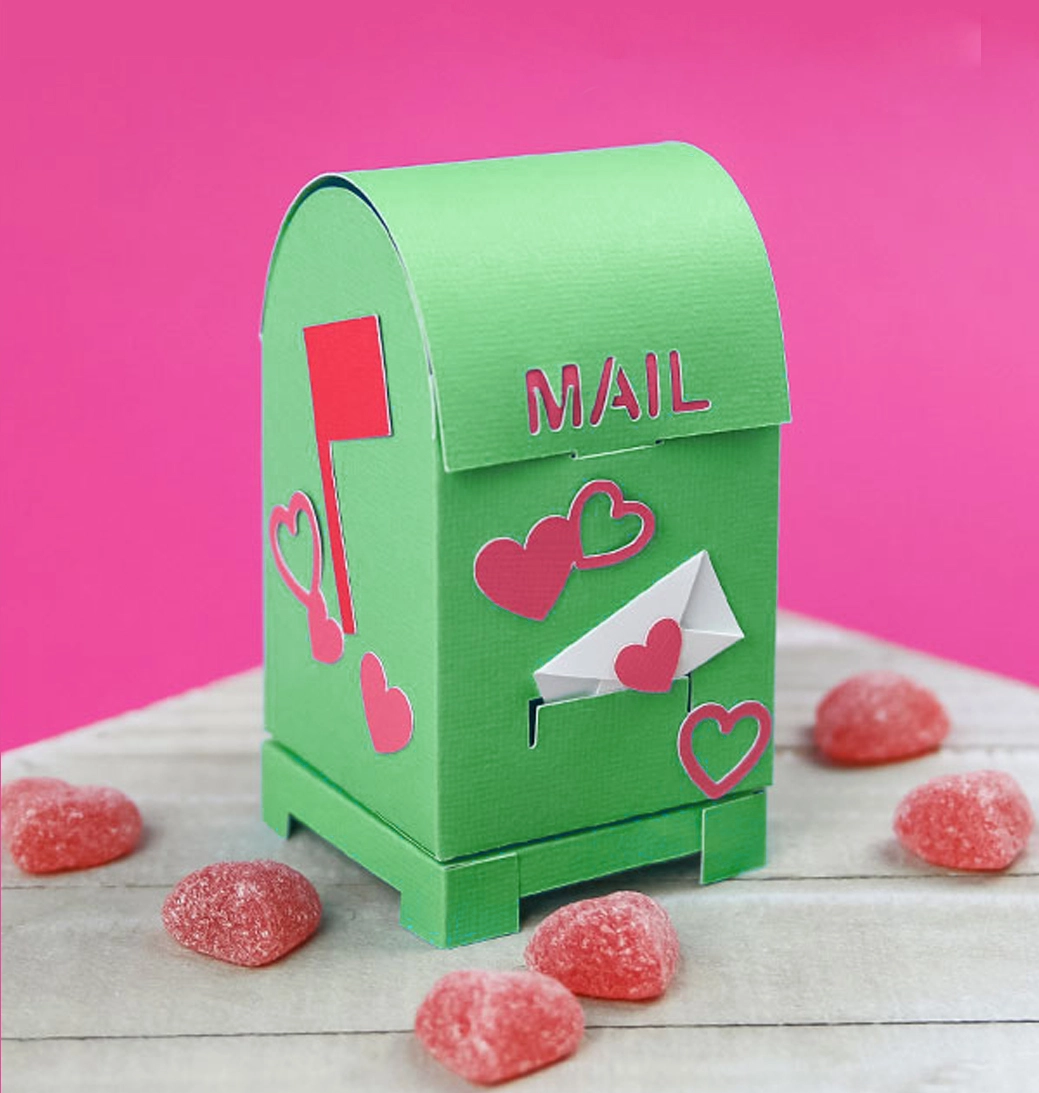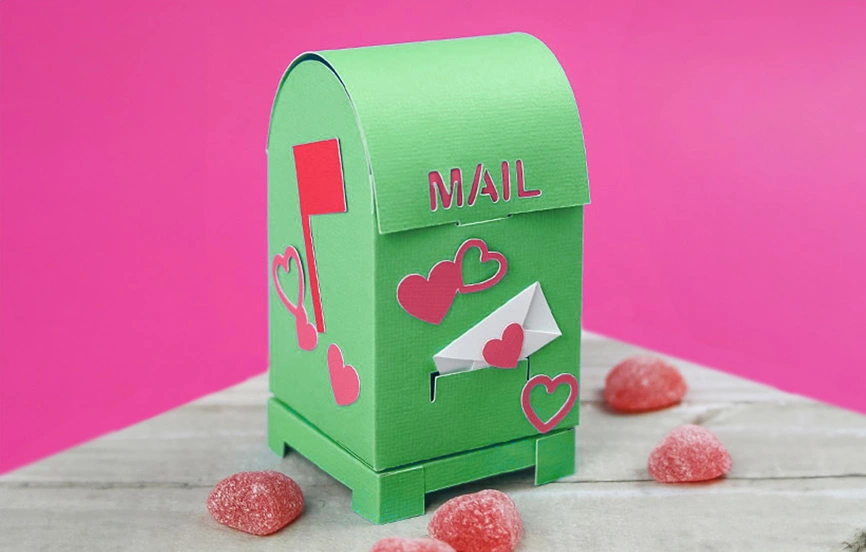Supplies
- 2 - 12” x 24” pieces of wool felt
- 12” x 12” piece of thin faux leather, vinyl, or leather
- 12” x 24” piece of lightweight iron-on interfacing
- 1 button stud
- Hole punch for button stud
- Mallet
- Craft knife
- Cutting mat
- Sewing thread matching leather color
- Clips (for holding fabric while sewing)
- Bone folder
- Ruler
- Black pen
- Flat head screw driver
Designs Used
Cutting Instructions
1
Load file A for the Felt Faux Leather Mandala Clutch (cut and stitch) into your cutting machine’s software.
2
Proceed in the design software until the first color selection appears and is ready to be cut.
3
For this design, you will want to cut two of the large rectangle fabric pieces for the clutch body in file A, and one of the small rectangles for the interior pocket. In this design, we used wool felt.
4
For wool felt, you may need to increase the pressure of the blade on your cutting machine. For best results, use the setting for felt. It is also best to test cut something small on a scrap piece of material to make sure the setting will cut all the way through.
5
Smooth the fabric pieces onto your adhesive mat. For best results, use a rotary blade to cut out the felt pieces. Then load the adhesive mat into the machine.
6
Cut out the clutch body and pocket pieces. Carefully remove the cut pieces and excess fabric from the mat.
7
Load file B into your cutting machine’s software.
8
Proceed in the design software until the first color selection appears and is ready to be cut.
9
For leather, vinyl, or faux leather, you may need to increase the pressure of the blade on your cutting machine. For best results, use a setting for thin leather. It is also best to test cut something small on a scrap piece of your material to make sure the setting will cut all the way through.
10
Smooth the fabric pieces onto the adhesive mat with the right side of the leather or vinyl down against the sticky side of the mat. Make sure the correct knife tool is in place. For best results, do not use the rotary blade to cut the faux leather or vinyl. Then, load the adhesive mat into the machine.
11
Cut out the clutch flap. Carefully remove the cut pieces and excess fabric.
12
Smooth a piece of lightweight interfacing onto the adhesive mat.
13
Cut out the interfacing piece. Either the rotary blade or the standard cutting blade will work on this step. Carefully remove the cut piece and excess fabric.
Crafting Instructions
1
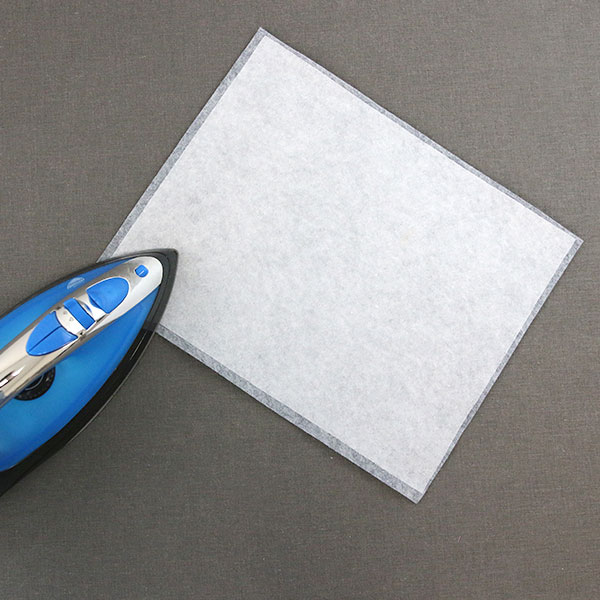
Iron the interfacing onto one of the two felt body pieces. This will give the clutch more structure in the finished product.
2
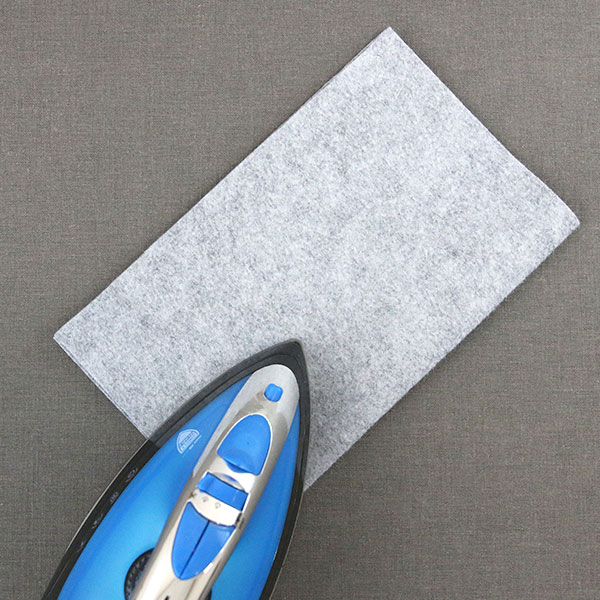
On the other piece of wool felt, fold the piece in half and press along the fold so that when you reopen it, it leaves a crease.
3
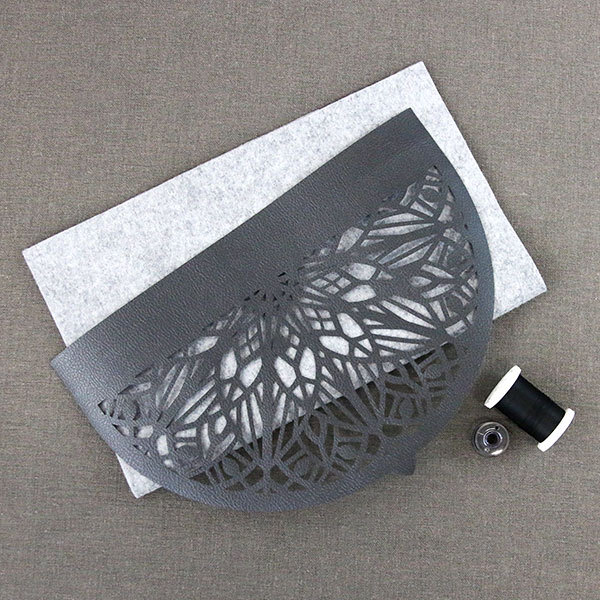
Before sewing, wind a bobbin with the same thread that will be used in the top needle. This way the stitching will look nice from both sides.
4
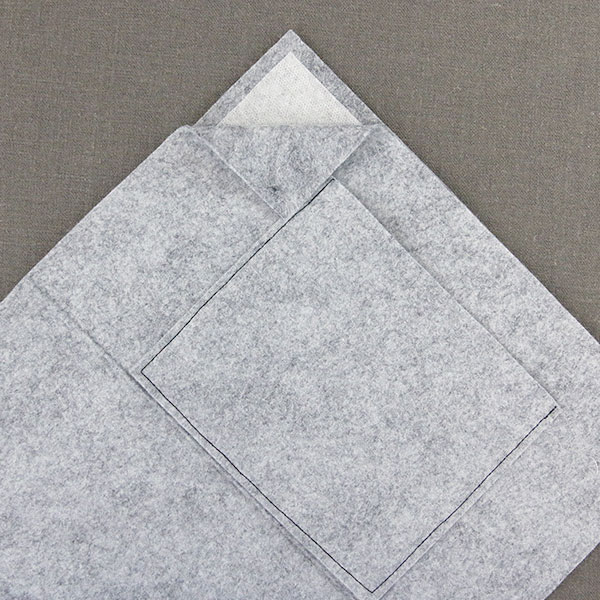
Center the pocket piece just above the crease and, using a thread color that matches the fabric, sew a 1/8 inch seam along the sides and bottom of the pocket. If desired, you can use sewing pins to hold the pocket in place while you stitch. We used black thread for easy visibililty in this tutorial.
5
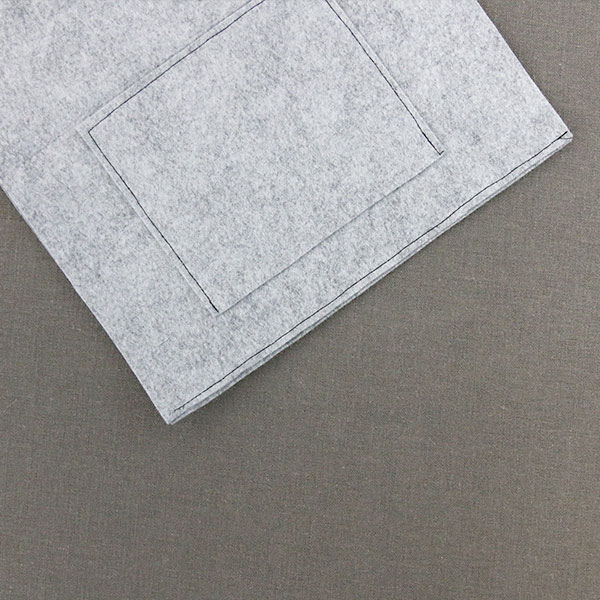
Match the edges of the two felt clutch body pieces together, making sure that the interfacing is sandwiched between the two pieces of felt. Sew a 1/8 inch seam along the top and bottom.
6
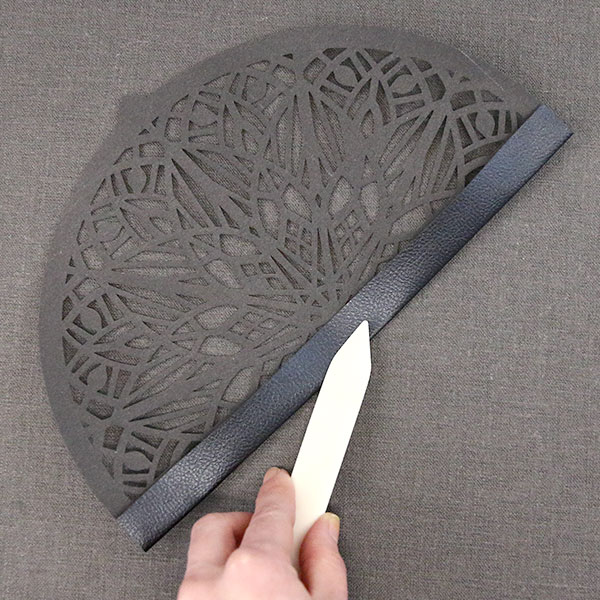
Now take the clutch flap piece and fold the solid top piece in half until it lines up with the beginning of the decorative mandala section. Press the fold very well with a bone folder or another hard, smooth object that will not leave marks on the leather.
7
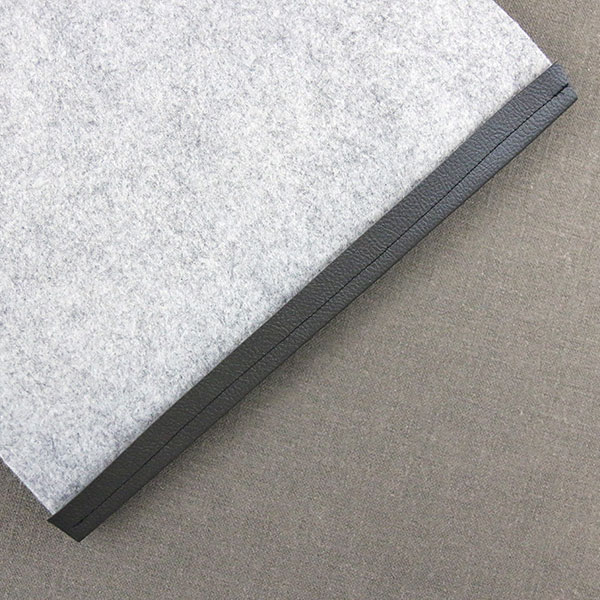
Place the felt clutch body piece so that the pocket is face dow. Line the fold on the leather clutch flap piece with the top of the clutch body piece. Top stitch a 1/2 inch seam along the top of the clutch to attach the clutch flap to the clutch body. Clips can be used to hold the fabric together if desired, but do not use sewing pins as they will leave holes in the leather.
8
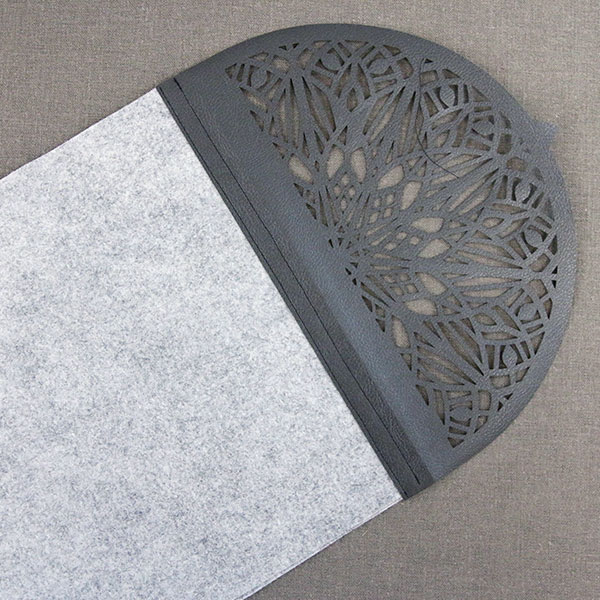
Top stitch a second seam right along the edge of the leather (closest to the felt) for extra durability.
9
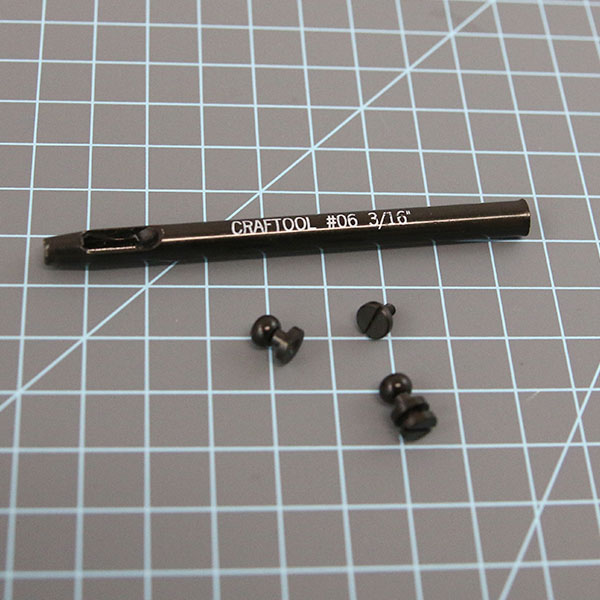
For this clutch a button stud was used as the clasp. This type of clasp has two pieces. The front piece is a ball which acts as the closure. The back pieces screws into the front piece from the backside of the fabric hold the stud in place. Button studs can be purchased online or in leather and crafting stores. To place a button stud, you will also need a hole punch that is roughly the same size as your button stud.
10
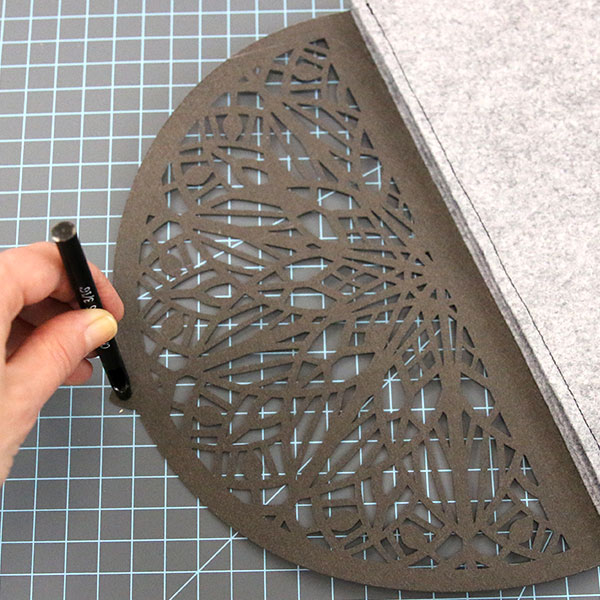
For best results, test the hole punch being used on a scrap piece of material. The thickness and stretch of the leather can affect what hole size is needed. Then use the punch and a mallet to punch the hole in the bottom center of the flap.
11
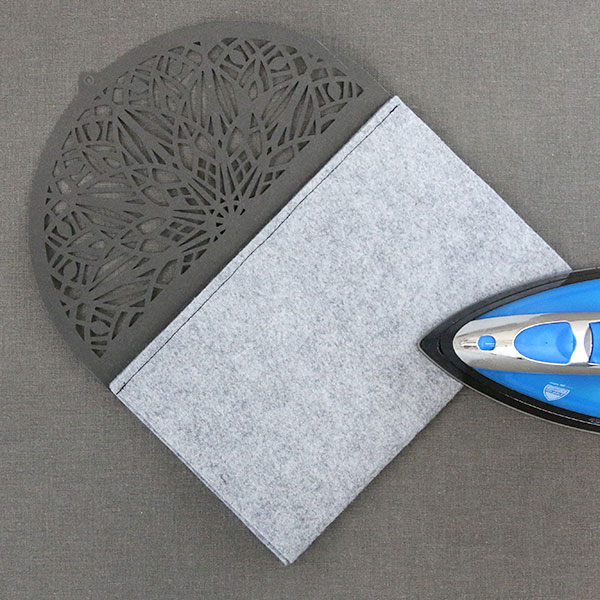
Fold the bottom section of the clutch body until it lines up with where the edge of the felt attaches to the leather. Press the fold well with a hard tool such as a bone folder, or use an iron to create a clean crease.
12
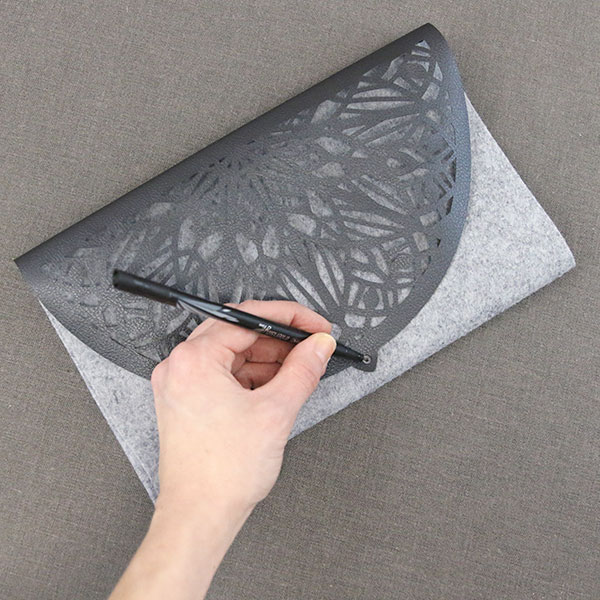
Fold the flap down over the folded bottom section, then hold the folded clutch firmly in place and use a pen to mark a dot through the hole that was cut for the button stud. This will mark where the bottom stud needs to be placed on the front of the clutch.
13
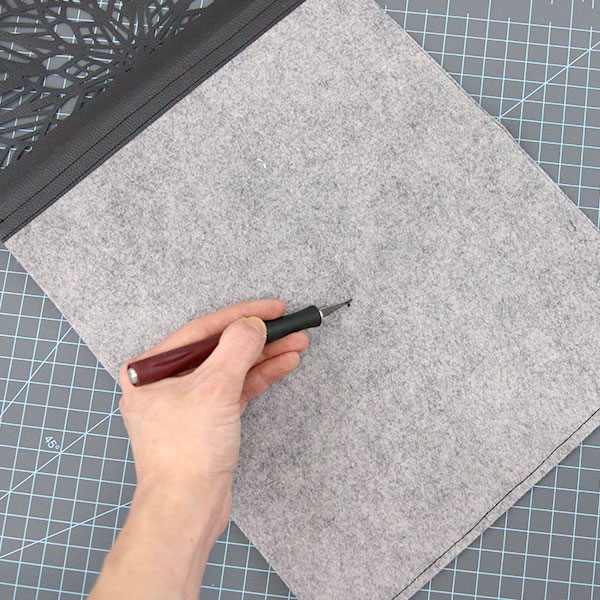
Unfold the clutch. Using a craft knife and a cutting mat, cut a very small “x” over the dot that was just made. This will create a small hole for the back piece of the button stud. Then push the screw portion of the button stud through the hole so the round back rests on the same side as your stitched pocket.
14
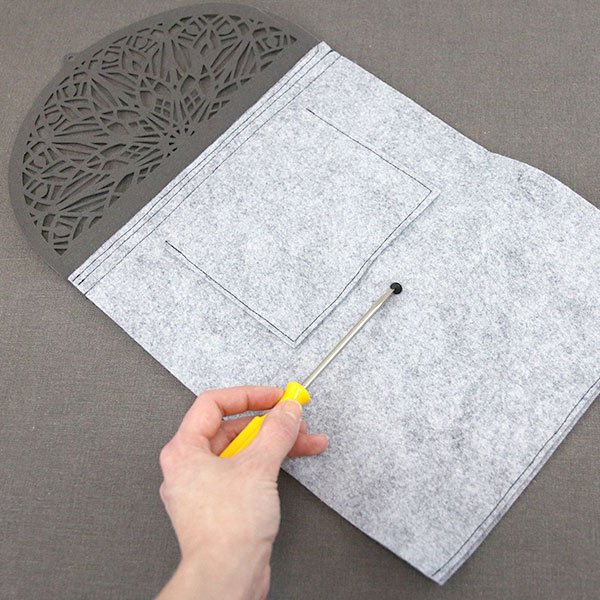
Then screw the front of the button stud onto the back and tighten it with a flat head screwdriver.
15
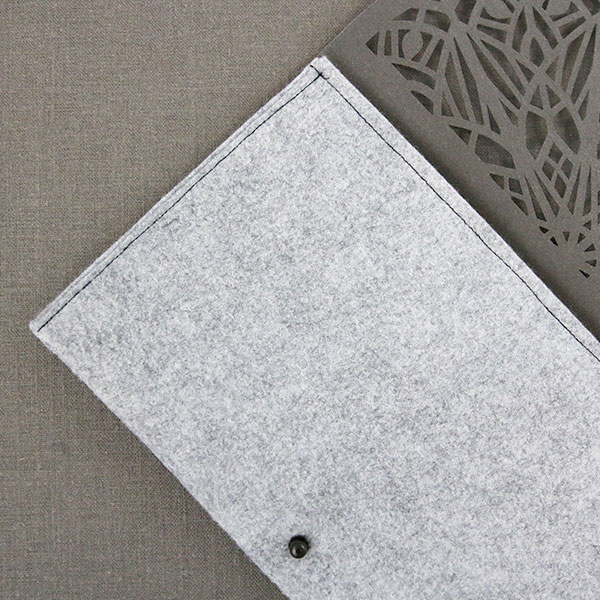
Fold the bottom edge of the clutch along the crease that was made earlier. Match up the edges, and sew a 1/8 inch seam along both sides. You can use sewing pins for this step if desired.
16
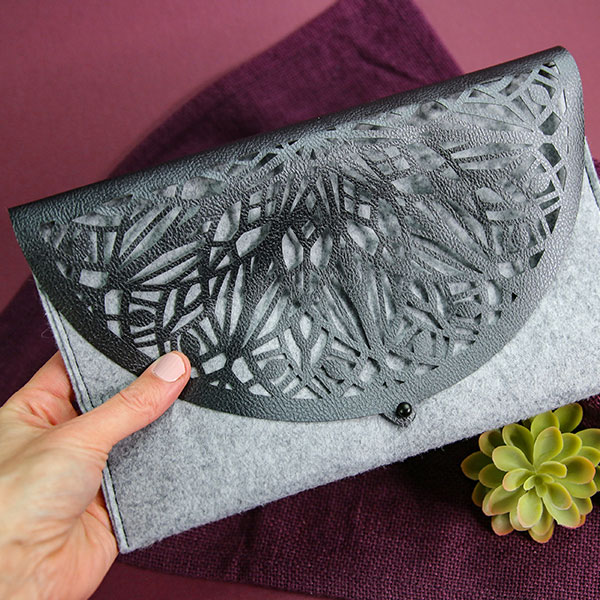
This completes the clutch. Repeat these steps to make a variety of clutches in different colors and sizes. This file can be scaled to make the clutch in any desired size. Just be careful if making the file smaller, as the details may have trouble cutting if the design is shrunk too much.

